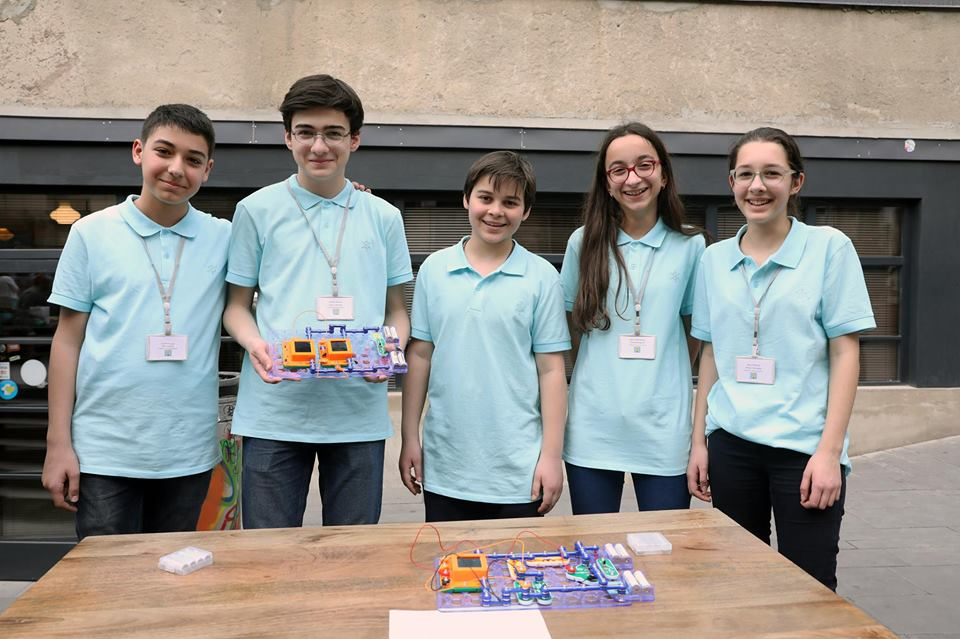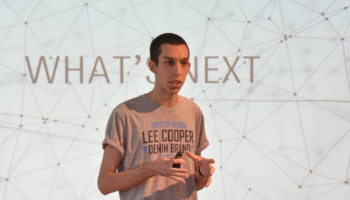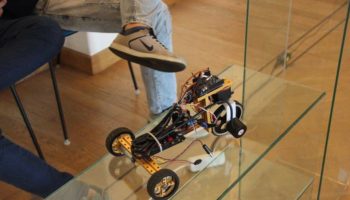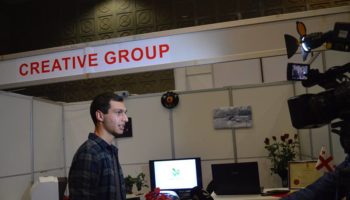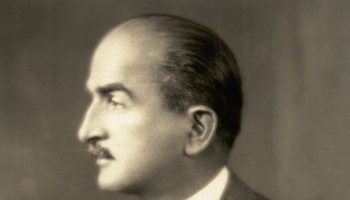The team of five eighth grade students of Komarovi Tbilisi physics and mathematics N199 public school are among the 20 finalists of 2017-2018 Millennium Innovation Competition of the “Millennium Challenge Foundation.” The team presented the project – “Learning Multimeter”.
“Doctrina” has interviewed Iakob Rigvava, one of the members of the team, about the invention.
-Iakob, what is the “learning multimeter?”
-There are electronics courses in our school, where we will learn the basic principles and elements of the electronics. We use „snap circuits” electronic kits in the learning process, but, unfortunately, there are not good measurement devises for these kits. The available means are not accurate, they have limited range and are quite expensive. Based on it, we decided to develop the device combining a number of more accurate measuring tools. The main goal was to develop the device that would be make the learning process easier. The device is for students, so it is easy to use and understand, unlike other multimeters, our device is equipped with two voltmeters, two amperometers, oscillograph (a device for observing and writing electrical processes) and signal generator. It has the ability to store and then schedule the data. There are two independent measuring channels, which allow us to measure voltage and power in two different areas of the circuit. It is controlled by only three buttons and is adjusted to the training kit. The multimeter is built using a modern microcontroller. In addition to the production of equipment for our project, it was necessary to write a special program on the microcontroller and the whole team worked on it.
– What stages did the program underwent until the competition final?
– As you know, Georgia’s Millennium Innovation Competition aims to identify the three best teams of high school students representing innovative projects in the fields of technologies, engineering and natural sciences. Before the final we went two stages – we introduced the idea of our project at the first stage, and then we had the initial presentation of the project to the jury members, for the final stage of the project we received a small grant and bough the necessary details.
– Who are the members of your team?
– We are the five-person team. One of the members of the team working on the project, Giorgi Chkhaidze, worked on the most difficult part of our device and managed the multi-meter to have the function of oscillograph. Our oscillography has 2 independent channels and it is a great opportunity for children to observe, measure and compare different signals. Another member of the team – Nika Svanidze worked mainly on the hardware part of the device, he drew the device’s schemes and helped us to construct the multimeter. The third member of the team – Mari Machaidze worked managed to make easy graphic representation of the collected data. The fourth student involved in the invention – Lela Khokhiashvili took care of the device’s interface.. As for me, I worked on measurement of quantities and data processing. My task was to get maximum accuracy of measurements. Irakli Khokhiashvili, teacher of the electronics courses, leads the team.
– How do you think, what is the future of your project?
-We had an initial presentation of our multimeters at the electronic classes. We have just 3 pieces of multimeters and we must prepare at least 10 pieces before September. After improvement of some more issues, we are going to introduce the device into the educational process from September.
Author: Tamar Devdariani
Translation: Tamar Tabatadze
The Hall of Young Scientists & Analysts – “Doctrina”


